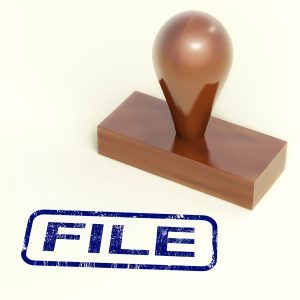The Steps of Bankruptcy
:
Filed under: Bankruptcy
 Those who are new with the bankruptcy process may find it intimidating. The bankruptcy procedure, which is sometimes viewed as the result of poor financial management and carelessness, is actually designed to help residents. The provisions of bankruptcy were created to assist persons who have been subjected to severe financial hardship in regaining their financial footing.
Those who are new with the bankruptcy process may find it intimidating. The bankruptcy procedure, which is sometimes viewed as the result of poor financial management and carelessness, is actually designed to help residents. The provisions of bankruptcy were created to assist persons who have been subjected to severe financial hardship in regaining their financial footing.
The first step in making any major decision is to educate yourself. Learning more about the steps of bankruptcy will help you make an informed decision about your debt relief options.
1. A petition is filed with the bankruptcy court by the debtor. The petition is a lengthy document that lays out your financial situation in great detail. You will be asked to include all of your debt accounts, incomes, assets, and personal property on the petition. The court will utilize the petition to assess your eligibility as you develop a strategy.
2. The debtor makes a list of all of his or her assets and debts. The petition material includes a great deal of detail about all of your personal belongings and valuables. This includes everything from your bank accounts to your household products, stuff you use for business or entertainment, and large items like your car and home. Your debt liabilities, which include interest charges, are listed to summarize your outstanding sums.
3. Any recent financial transactions are disclosed by the debtor. It’s critical to avoid making significant, needless, or irregular financial transactions in the days leading up to a bankruptcy petition. The court will want to know where and why you are spending your money. Spending too much money before filing may prohibit you from receiving benefits or be considered dishonest. During your bankruptcy case, it’s critical to be upfront and honest.
4. The debtor offers to the creditors a plan of liquidation and/or reorganization. In a Chapter 13 bankruptcy, you must establish a repayment plan to reorganize your debts. The repayment plan is based on the petition’s financial responsibilities vs assets and income. This information is used to calculate a monthly payment that will satisfy the remaining debts at an agreed upon amount that you should be able to afford.
5. The debtor’s petition is heard by the bankruptcy court. Creditors have the option to ask questions or express concerns at the hearing. The court will determine whether to approve a Chapter 13 repayment plan or a Chapter 7 liquidation.
6. The bankruptcy court issues an order granting or denying the debtor’s request for a debt discharge. Any leftover payments are no longer collectible and the creditor is unable to collect in the future if your obligations are satisfactorily resolved. To put it another way, you are no longer responsible for the loan.
If you have questions about bankruptcy or want to know whether bankruptcy can help you get out of debt, consult a Dallas bankruptcy attorney.







